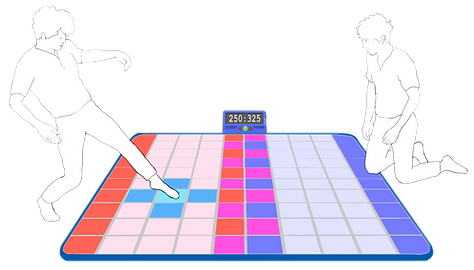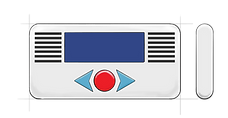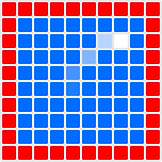
Personal Independence
Physical Fitness
Mental Disability

Defining Mental Disability
Conceptual Skills
Social Skills
Practical Skills
Adaptive Behaviors and Skills
We use Adaptive Behaviors and Skills every day to complete basic tasks. Being able to read/count, appropriately interact with others, and keep a schedule all require use of these skills. Lacking certain adaptive behaviors and skills can be used to help diagnose a mental disability.
Literacy
Self-direction
Concept of numbers
Concept of time
Academic skills
Interpersonal skills
Social responsibility
Self-esteem
Social problem solving
Following rules and laws
Avoiding victimization
Personal Care/Self Help
Daily Living Skills
Occupational Skills
Safety
Transportation
Schedules
Adaptive Skills
Personal Independence
For most people, adaptive skills enable personal independence.
Adaptive skills are the skills a person uses in everyday life to live and function independently.
Mental Disability
Mental Disability disrupts this.
Adaptive Skills
Personal Independence
How?
Increase the personal independence of people with mental disability, for the benefit of both the affected individual, as well as the caregivers who assist them in everyday life.
I want to...
Focusing in on Down Syndrome and Physical Fitness
People with Down Syndrome . . .
• 2 to 3 times more likely to be obese
• Increased risk of developing Type 2 diabetes
• Increased risk of developing hypothyroidism
• Decreased metabolic rate
• Produce more of the hormone which helps regulate hunger
However, the problem is more than just physiological. People with Down syndrome also have a tendency to be more sedentary, meaning they do not get the exercise needed to maintain a healthy weight.

Interviews and observations I did at the group home community Hope Village led me to look at physical fitness as a possible direction. More specifically, the physical fitness of people with Down Syndrome.
“Children with Down syndrome have similar levels of low-intensity and moderate activity compared to their siblings, but perform significantly less vigorous-intensity activity.”
Murray, J., (2010). Obesity in Children with Down Syndrome.
My brother Jake is a former resident of Hope Village.
Barriers to Physical Fitness
A Threefold Problem
Physiological
Poor Metabolism
Higher risk of developing weight related disease
Behavioral
More likely to over eat and live a sedentary lifestyle
Little motivation to exercise
Situational
Unable to effectively exercise without the assistance of caregiver or dedicated social program.
While I cannot address physiological problems, I can address the behavioral and situational issues that lead to lack of exercise by creating a desirable way for people with Down syndrome to get exercise without the assistance of others.
Motivation Through Gamification
The ability to work towards long term goals is much more difficult for people with down syndrome, so a solution which provides instant gratification is preferred. Using the technique of Gamification to make physical activity fun and engaging will provide the motivation necessary.
.jpg)
Reflexes
Reflexes

Memory

Deduction

Fine Motor Skills

Fitness
Different games and toys focus on training in different areas. I can design a solution that focuses on training areas where people with down syndrome need the most attention.
Conceptualization



Initial concepts of an interactive mat were partially wall mounted and had predetermined light patterns.
Interaction Possibilities
Drag Press Hold


Later concepts moved the mat to the floor to enable more physical activity.
Originally the mat to was used to display information such as scores


Eventually a console was added to act as a scoreboard and handle more complex interaction, such as game selection




Creating the mat in two parts connected at a corner allows it to have another format.
Flexible sections every 2 pixels allows the mat to fold up, creating new game possibilities as well as a storage solution

Making it Real
The mat can be broken down into 3 distinct groups:
Visual (The Output)



Inspired by the tactile response and efficient construction of rubber dome keyboards, the sensing layer consists of a sheet of rubber domes laid over a membrane circuit.
Consists of a button matrix to detect the players input.
Sensing (The Input)



I used Light Guide Panels (commonly used for backlights in LCD displays) and RGB LEDs to create a display with a 10X10 resolution. The panels are covered by a sheet of translucent white molded silicone.
Consists of a pixel grid, which act as the graphical output to the player.
Visual (The Output)


Inside the console is an Arduino Due. The Arduino stores and runs programs, receives information from the sensing layer, and sends information to the visual layer.
Consists of a microprocessor and console and acts as a bridge between the input and output layers.
Processing (The Bridge)

The prototype used tactile buttons instead of a membrane circuit.
The prototype used white cloth instead of translucent silicone.

Console and Display
Each tile is both a
pixel and a button.
The two halves of
mat are connected
by a short cord
Finalized Design

Speakers
Display
Navigation Buttons
Volume Control
Auxiliary Input
USB port
Console
The console houses the processor components, speakers, and a display for selecting games and displaying additional information such as scores or graphics. Games are loaded onto the console from a computer through the USB port on the side.

Multiple Formats
It’s Your Move! is made up of 2 rectangular mats with a resolution of 5X10 pixels, making a 10X10 square mode, as well as a 5X20 track mode possible.

Storage Solution
It’s Your Move! has flexible sections every two tiles.
It can be folded into a package small enough to slide under a couch or bed.
Layered Construction Breakdown
Molded Urethane Top Sheet
Translucent white silicone rubber diffuses the glow of the light panels and is easy to keep clean
Light Panels
The light guide technology used in these RGB light panels gives an even glow using minimal LEDs
Tactile Domes
Silicone rubber domes give each tile a satisfying tactile click with every button press
Flexible Printed Circuit
Circuitry for the button matrix is printed on thin PET film in 2 layers
Structural Metal Plates
Rigid sheet metal plates provide a base for the tactile and circuit layers
PVC Base
This base sheet seals the layered assembly and provides grip on hard surfaces

Tips for Game Developers
It’s Your Move! has unique abilities that game developers can take advantage of when designing games for the platform



Constant Tracking
Developers can use the ability to constantly track where the user is and what they’re doing on the mat to get them to move their feet, crawl, jump, stand still, or stretch.
Appropriate and Expressive Sounds
Adding a sizzle when the player steps in lava or a ding when the player gets a power up adds another layer of depth to game play.
Versatility
It’s Your Move! is only limited by what it’s programmed to do. Games can be anywhere from physically intensive to intellectually stimulating.
In addition to games developed specifically for It’s Your Move!, many existing 8 bit and grid based games could easily be adapted to run on the platform.

Dance Floor

Tone Matrix

Painter

Snake

Color Match

Tag

Obstacle Course

Stay in Line

Floor Keyboard
Custom Game Examples
I designed 3 simple games specifically for It’s Your Move! focused on the specific types of exercise most commonly needed by people with Down Syndrome.
Asteroid Avoid - Coordination, Flexibility, Balance
-
The player must keep at least 3 tiles pressed at all times
-
Getting hit by an asteroid deducts one health point
-
Getting hit by a red asteroid deducts a health point and speeds up the game for 10 seconds.
-
Catching a green power up restores one health point and slows down the game for 10 seconds.

Music Run - Cardio, Balance, Coordination
-
The player must press the tiles when the colors pass through the purple line
-
The player progresses down the mat as the song goes on, thus having less time to prepare for the oncoming notes
-
Reaching the other end of the mat beats the level

Get Blokt - Reflexes, Cardio, Multi Player
-
Players press tiles on their line to fire a square
-
The opposing player must hit the square before it gets to his line, or he will receive a penalty.
-
Successfully hitting the other players line will award you points.
